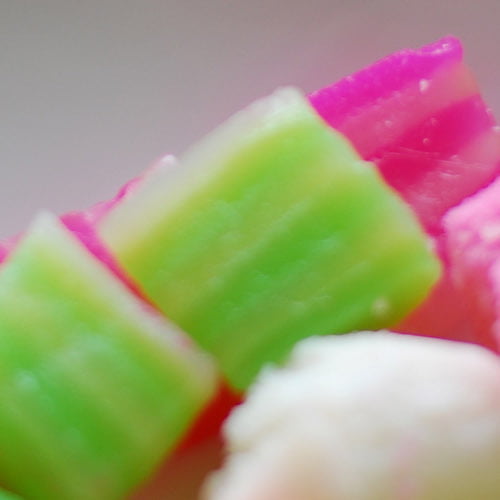What is Thai Steamed Layer Cake (Khanom Chan ขนมชั้น)?


Thai Steamed Layer Cake (Khanom Chan ขนมชั้น)
Thai steamed layer cake is called Khanom Chan “ขนมชั้น” in Thai. Khanom “ขนม”means dessert, while Chan “ชั้น” means layered. Put together, Khanom Chan “ขนมชั้น” is layered dessert. It’s tender yet chewy and firm with an aromatic, slightly sweet flavor. It can come in shapes of square or flower.
Khanom Chan is one of the 9 auspicious Thai dessert traditionally used in ceremonies and weddings. It has 9 layers, because 9 in the Thai language is similar to a Thai word that means to move forward. Therefore, gifting this dessert is to bless one with prosperity or success.
What is Thai Steamed Layer Cake Made From?
Khanom Chan is made from tapioca flour, rice flour, arrowroot flour (or mung bean flour), coconut milk, sugar, water, and other natural ingredients. Jasmine flowers and pandan leaves are optional for adding a delicate scent. Pandan leaves provides a natural green color, while butterfly peas a blue color.
The various types of flour are mixed together before gradually adding coconut milk that’s cooked with sugar. Once the mixture is smooth, it’s then divided into bowls with coloring added. The numbers of colors are up to preference. There can be two colors, which are alternated between layers.
A pot is then placed over hot water for steaming. Either the mixture is poured into a large tray and cut into squares after, or small molds of elegant flowers are used. The dessert is made by gradually pouring the liquid into a tray, switching between different colors. After one layer is cooked, the next layer can be poured. Each layer takes 5-7 minutes to cook. Making this dessert requires a bit of patience as Khanom Chan usually has 9 layers.
What is the origin of Thai Steamed Layer Cake?
It’s likely Thailand was influenced by nearby countries as this steamed dessert has many variations across Asia. In Vietnam, steamed layer cake, Bánh Da Lợn is popular and uses unshelled mung bean for a yellow color. Another steamed layer cake called Kueh Lapis is also popular in Malaysia, Singapore, and Indonesia, believed to be inspired by baked layer cake from Europe.
